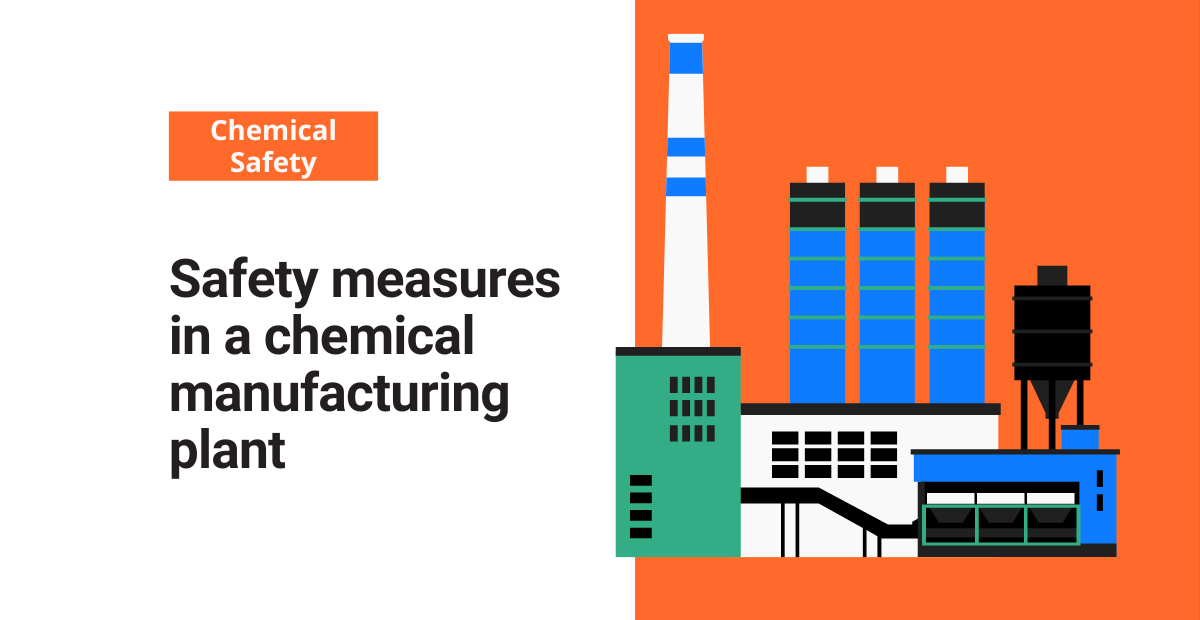I have seen firsthand the importance of having proper safety measures in place at a chemical manufacturing plant. These types of facilities are inherently hazardous due to the materials and processes involved.
That’s why it’s critical to have well thought out systems to protect both workers and the surrounding environment. If you manage such a plant, below are the key safety measures you should implement.
Task-specific PPE
Anyone working directly with hazardous materials needs to have task-specific PPE. This means that you’ll need to perform a PPE hazard assessment to determine what’s required to protect workers. [You can use this free template below to get started]:
Here are some of my top recommendations:
- Chemical-resistant gloves
- Respirators
- Safety glasses
- Spill-resistant clothing
In addition to providing workers with proper PPE, you should train workers in how to carefully inspect it. All employees should know when their PPE needs replacing, and you should implement a replacement system within the plant.
And, of course, make sure the equipment follow’s OSHA’s PPE standards as well.
Free form!
Complete a full PPE hazard assessment with this template from our resource library. It is crucial for anyone in a chemical manufacturing plant.
Emergency response plan
Everyone employee within the plant should know your emergency response plan. As always, make sure you cover the plan during the onboarding process. But go a step further and post evacuation routes in high-traffic areas to enhance safety in chemical manufacturing settings.
Your plan should include information like:
- Evacuation procedures
- Emergency services contact information
- Machinery shutdown protocols
- Hide and shelter procedures
This emergency preparedness form can help you map out your response plan.
Chemical manufacturing plant storage and handling
The inappropriate storage and handling of chemicals is a major risk in any operation, let alone a manufacturing plant. When working with many potentially hazardous ingredients, having an organized storage system can help prevent small, yet highly dangerous, incidents.
As a best practice, all chemicals should be clearly labeled, and their containers stored in an appropriate location.
Additionally, you should perform regular audits of the storage area to ensure compliance with your site’s guidelines. Use this flammable cabinet inspection checklist as a template to build out other inspection reports your team can use.
The storage area itself should be well-ventilated and equipped with spill response equipment such as absorbent pads and spill kits, vital for any chemical manufacturing plant.
Process safety management (PSM)
OSHA’s process safety management standard requires a systematic approach to managing highly hazardous chemicals. It involves identifying potential hazards, implementing controls to mitigate those hazards, and continuously monitoring and evaluating the effectiveness of those controls.
Every chemical manufacturing plant should have a PSM program in place to ensure the safety of employees and the surrounding community.
Regular training and safety audits
Any time you introduce new products into your manufacturing lineup or new ingredients into a process, it’s important to train workers how to handle them.
To supplement training, you should also conduct safety audits to ensure that workers are following the information they receive. During these process audits, look for other areas of improvement or previously undiscovered hazards.
If you get in the habit of performing audits regularly, you can prevent small problems from becoming large ones.
Chemical manufacturing plant change management tracking
Safety measures are crucial in any chemical manufacturing plant for multiple reasons. Besides protecting workers and the community, they also allow you to identify new hazards or inefficiencies within your processes.
Specifically, the best way to capitalize on your safety measures is to track any related action items or activities. For instance, this may include refresher training, process audits, PPE hazard assessments, Gemba walks, and more, all essential in maintaining chemical manufacturing plant safety.
Using action tracking software is an easy way to log and review any of the quantitative or qualitative data you collect. Hence, with that information, you can more easily implement process changes that will make your manufacturing facility safer and more efficient in the future.




